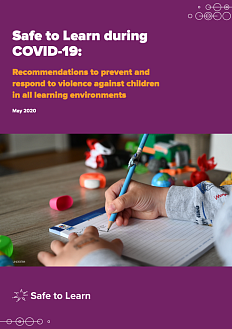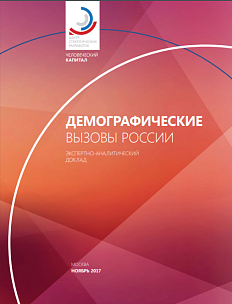In the landfill of history
There is a hill in southwest Rome. The citys ninth, if you count the seven historical hills plus the Vatican. But this hill is unique because it is artificial. It was made from the remains of broken clay vessels called amphorae back during the days of the Roman Empire. It even has its own name, the Testaccio. To archaeologists and historians, this is a significant place, but to the people of ancient Rome, it was a trash heap and far from a prestigious residential location. But thousands of years ago, the problem was not as pressing as it is today. At the very least because the volumes of post-consumer materials are simply incomparable.
Russia produces five billion tonnes of trash a year a figure that includes both industrial and municipal solid waste. However, for a long time, these billions of tonnes of trash remained outside of executives field of vision, despite the Testaccio analogues rising up along the Moscow Ring Road and the horrible clouds of stench coming from the municipal solid waste facilities that would sometimes envelop nearby cities. In modern Russia, you dont need to remember that trash exists, you have the opposite problem. What was forgotten were the established practices from the countrys Soviet past, such as the collection of paper and metal recyclables. From the mid‑1990s, Russia didnt recycle its own paper, sending it instead to Europe.
Experts estimate the size of Russias waste recycling market at 100120 billion roubles annually. At the same time, to develop further, this industry needs far larger investments in the construction of processing plants, facilities, and sorting centres. Early estimates place that figure at approximately 350 billion roubles. The cost-effectiveness of this type of business isnt too bad somewhere from 50 to 70%, though the investment is recouped slowly, over a period of no less than 10 years.
Currently the most interest is being shown in the collection and processing of ferrous and nonferrous metals and waste, high-grade waste paper, clean textile waste, and some polymer and metallurgical waste. And as soon as authorities acknowledged that there was a problem and promised to help, businesses started to act...
Take, for example, Daria Alekseeva. A few years ago, this young Muscovite came up with a way to make old clothes useful again. She founded a textile recycling company, which she then turned into a charitable foundation. Today, Vtoroe Dyhanie (Second Breath) accepts, sorts, processes, and sells old clothing and new items made from some of the accepted waste.
«The processed textiles can be used for different purposes, because they differ by composition and characteristics. For example, hygroscopic materials can be made into cleaning rags that are then sold to printing companies and other manufacturers. Synthetic fibres are not readily absorbent, so they can be broken down and made into regenerated fibre, a product that looks like a multi-coloured wool. This raw material can then be used as a filler for soft furniture,» said Daria.
Or take Plastica CEO Roman Sebekin, who got involved in the production of building materials from plastic waste (polystyrene) by chance: «After a long series of experiments I created a block made of polystyrene concrete and saw that it cost 50% less than products made of raw materials, while not compromising in quality.» Though, according to Sebekin, Russia may be facing a new issue in the near future. «As the trash reform takes hold, regional operations will lose interest in and find it unprofitable to collect and sort secondary waste. After all, that would mean spending more time and money! Which means that, sooner or later, a single company will form, either as part of a regional operation or independently, which will be responsible for collecting and processing secondary waste. And sooner or later this monopoly will start to set their own terms,» predicts Sebekin.


Businessman Roman Sebekin invented a way to turn plastic waste into comfortable homes
The order has been issuedBusinesses interest in harnessing the countrys secondary waste processing potential is just a third of the picture. The other two factors crucial to success are political executive will and the publics readiness to change their approach to waste sorting.
The will has made itself known. «Yes, we have probably neglected the waste disposal problems [...] we have never paid attention to them. Many landfills are overfilled [...] turn[ing] into real mountains of garbage near residential areas. I urge the representatives of the authorities at all levels: pretending that nothing is happening, turning away, brushing aside peoples needs is absolutely unacceptable,» announced President Vladimir Putin in his address to the Federal Assembly in February 2019. «This year, the regions began adopting a new system of solid municipal waste management. However, if the only change is a rise in rubbish clearance prices well, this is not real work; it is a sham,» said the head of state. He added that in the near future, the country needed to eliminate shady garbage companies and close 30 of the largest problem landfills within city boundaries.
The reform was launched on 1 January 2019 and affected almost all Russians (with the exclusion of those living in federal cities): the garbage collecting fee was moved from the housing maintenance and renovation section of the utilities bill to a line of its own. Moreover, this payment is no longer calculated by a propertys square footage, but by its number of registered residents.
The approach to waste in Russia is changing globally, but gradually. Over the past two years, regions have already begun independently selecting companies on a competitive basis to be responsible for the collection and recycling of waste in the next 10 years. Now they must also shut down illegal dumps and organize segregated waste collection points. This reform should encourage society to create an entire industry, facilities, and thousands of jobs.

By 2030, municipal solid waste recycling in Russia must grow by almost tenfold: from todays 9% to 80%. At the very least, this figure is part of the Strategy for Development of the Industry for Sorting, Recycling and Treatment of Waste for the period up to 2030. The plans also include the construction of 220 waste management plants over the next 11 years.
A Russian Ecological Operator has been created as part of the Ministry of Natural Resources and Environment. It has been tasked with standardizing the reform process. According to Dmitry Mironov, coordinator of the All-Russia
Peoples Fronts Generalnaya Uborka (General Clean-up) environmental project, this organization must help support and back regional specialists.
«Currently regions have neither the intellectual competencies nor the specialists to organize this industry and system the way it needs to be organized. These competencies can only be found on the federal level. Each region needs to develop its own team. A public company will need to monitor reforms, whats going on with the organization of infrastructure for segregated waste collection, and any current problems. It will make sure that rates are set and calculated properly,» explained an expert.
It is expected that the company will develop a unified municipal solid waste management plan in the near future. It will include data on current capacities, storage locations, transport routes, and plans to create new facilities.
Garbage barge
But all of these grand plans can shatter the face of todays realities. They are as follows: on the one hand, the population has yet to acknowledge the importance of their involvement in the waste management process, on the other hand, the recently developed shadow sector of the economy is unwilling to get involved in solving the waste problem. This has nothing to do with a lack of understanding or a desire to oppose the governments actions its purely the result of habit and a lack of resources. Russia has plenty of enterprises that have never paid for waste collection, preferring to burn it or bury it in the woods. No one knows how many such businesses exist in the country. There is no data. Therein lies the problem for companies ready to get involved in the collection and processing of waste: they have no way to calculate how many containers are needed in any given area. They always end up with fewer than necessary. Meanwhile, an accurate estimate is crucial to making sure that municipal solid waste collection payments remain stable from month to month.
Organizing measures to increase waste literacy among the public is an even more complex problem. The USA hasnt even managed to address this issue fully, and theyve been grappling with this issue since the late 1980s!
American trash reform was precipitated by a New York State barge carrying 3,000 tonnes of garbage, which could not offload its cargo in any of the nine US ports it visited. It was eventually forced to return to Americas financial capital and process (burn) the garbage there. The story of the garbage barge caused a media scandal, authorities noticed the problem, passed legislation, and even allocated funds towards campaigns to encourage the public to recycle. Americans now had the opportunity to sort their trash and separate away recyclable materials such as plastic bottles, aluminium cans, other metals, glass, etc. But in the mid-1990s, the American researcher Stevenson Svensson showed that this policy was ineffective: Americans continued to, without a care, consume tonnes of food and mountains of paper. Afterwards, this paper and packaging would often make its way to landfills, where it was mixed in with the rest of the waste. Today, the situation is far better, but it is still far from Japanese or Swedish levels of waste consciousness. Its unclear how many years this process will take for Russia. But Russians will have to learn a new, complex science. The alternative is too unattractive.






